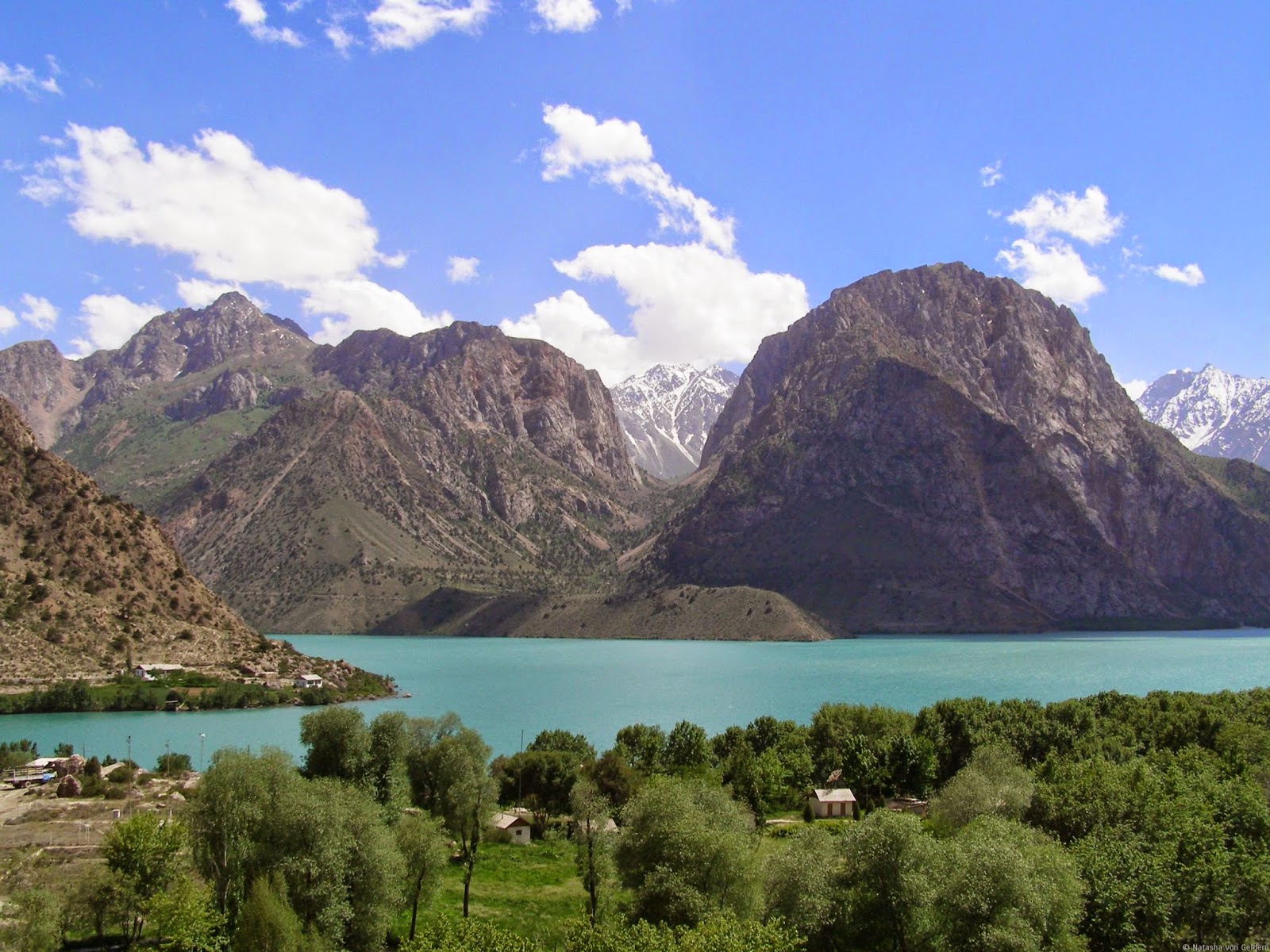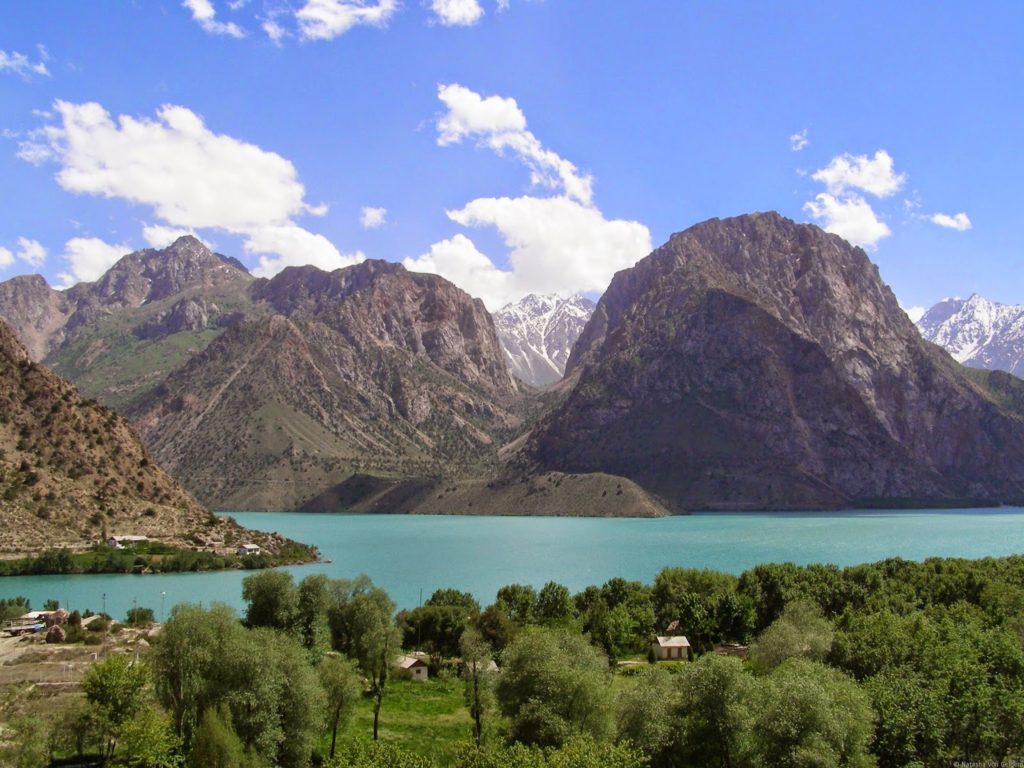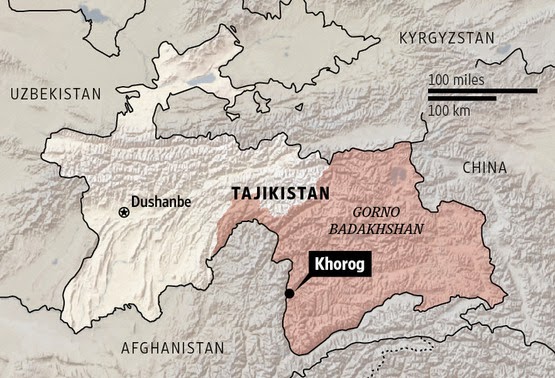In Buddhist/Hindu doctrine/mythology the gods reside on mountain tops. Hence
it was a tradition amongst Himalayan climbers not to step on the last
peak-inch. Apparently in the Pamir plateau-land of Tajikistan it is Aga
Khan (for background see wiki reference below) who inspires a similar devotion amongst the people.
Geographically, Khorog (capital of Pamir/Gorno Badakshan) borders north-eastern Afghanistan and is not so much distant from Gilgit and Kargil. Is it just a coincidence that the mountain people are in general, followers of a less-followed (religious) path than the plains-people? At any rate, when the going gets tough (and it is already extremely tough), the thugs from the plains will find the terrain to be very rough indeed. Let God (and Aga Khan) give strength to the dissenters to fight for justice (and truth).
Pamiri people, who speak a different language from other Tajiks, and
follow the Ismaili branch of Shiite Islam (most Tajiks are Sunni).
Many
of Tajikistan’s roughly 135,000 Pamiris have come to see themselves as
victims of a chauvinistic dictatorship that wants to suppress their
culture. Pamiris are among the strongest opponents of President Emomali
Rahmon, whose 22-year rule over Tajikistan has become more and more
kleptocratic and nepotistic.
the summer of 2012, after a local security official was killed near
Khorog, which is by the Afghan border, the government undertook a
military operation there. Ostensibly aimed at capturing several
commanders it blamed for the official’s death, the operation’s scale and
intensity made it seem more like an attempt to finally get the Pamirs
under control. Snipers stationed on the two steep ridges that encase the
town fired indiscriminately at residents, backed up by mortars and
helicopters.
anything, though, the operation cemented the commanders’ position as
defenders of the Pamiris. When I visited Khorog last summer, I found a
town united in its opposition to the government. One resident who had
previously opposed the commanders told me that when the fighting started
in 2012, “I didn’t think twice about which side I was on; these were
invaders.” Unexpectedly strong resistance from the Pamiris forced the
military to retreat.
conflict then mostly lay dormant, at least until May of this year, when
protests broke out in Khorog after police officers shot at a car of
suspected drug dealers in the city center. Residents took to the streets
for several hours and set fire to some government buildings.
government blamed outside forces for the instability. A top
presidential adviser, Sherali Khairulloyev, said that the protests had
been orchestrated by foreigners — whom, bizarrely, he claimed to have
spoken to by phone in Dushanbe and yet would not identify. A member of
Parliament suggested that NATO and Saudi Arabia were fomenting rebellion
in the Pamirs. The head of the G.K.N.B., the state security agency,
accused the foreign security services of unnamed “big countries” of
working with local criminal groups to destabilize Tajikistan. When the
British ambassador traveled to Khorog earlier this month, he was
prevented from meeting with local activists.
was in this atmosphere that on June 15 Mr. Sodiqov went to Khorog for
field work for a project, run by the University of Exeter, on conflict
management in Central Asia. The next day he was interviewing a local
opposition politician, Alim Sherzamonov, in the city’s central park when
plainclothes officers interrupted the meeting and took him away.
Sodiqov is now believed to be in the custody of the G.K.N.B. He has not
been seen since his arrest, except in an interview broadcast on local
television that was heavily edited in an apparent attempt to discredit
both Mr. Sherzamonov and the Aga Khan, the Ismaili spiritual leader,
whom the government fears as an alternate source of authority among the
Pamiris. As of June 25, close to 1,900 Central Asia scholars had signed
an open letter
expressing concerns over Mr. Sodiqov’s safety. He is 31 years old and
married with a young daughter. If convicted of treason and espionage, he
faces 20 years in prison.
all that because, as the political scientist Parviz Mullojonov wrote
last week in the Tajik newspaper Asia Plus, Mr. Sodiqov became a victim
of the government’s “search for external enemies” to explain its
internal problems.
of Tajikistan’s suspected enemies, incidentally, are among its most
important partners. The United States and Russia, for example, have
provided substantial aid to the government, believing that Tajikistan is
a linchpin of stability in Central Asia and that maintaining order in
the region outweighs concerns about Mr. Rahmon’s arbitrary and
occasionally violent governance.
United States has given Tajikistan $278 million in military assistance
since 2001, and has helped train and equip the G.K.N.B. for
counterterrorism and counternarcotics operations. As Western troops
prepare to withdraw from Afghanistan, Russia has promised substantial
support to the Rahmon government. This is part of a deal that extends by
three decades Moscow’s lease on a Soviet-era military base in
Tajikistan, but it is also a measure of the Russian government’s fears
that radical Islamism could bleed north from Afghanistan.
yet, with Mr. Sodiqov’s arrest, the Tajikistan government is once again
blaming outside forces for destabilizing the Pamirs, all the while
intimidating independent researchers from seeing for themselves what
actually is happening there. That only portends an escalation of the
conflict, and Tajikistan, rather than be a bulwark against instability
in Central Asia, may well become part of the problem.
……..
Aga Khan is a name used by the Imam of the Nizari Ismailis
since 1818. The current user of the name is Shah Karim who claims to be
the 49th Imam (1957–present), Prince Shah Karim Al Husseini Aga Khan IV (b. 1936).
According to Farhad Daftary, Aga Khan is an honorific title bestowed on Hasan Ali Shah (1800–1881), the 46th Imam of Nizari Ismailis (1817–1881), by Persian king Fath-Ali Shah Qajar. During the latter stages of the First Anglo-Afghan War (in 1841 and 1842), Hasan Ali Shah and his cavalry officers provided assistance to General Nott in Kandahar Province and also to General England in his advance from Sindh to join Nott.
He was awarded the status of “Prince” by the British government’s
representatives in India and became the only religious or community
leader in British India granted a personal gun salute.
When Hassan Ali Shah, the first Aga Khan, came to Sindh from
Afghanistan, he and his army were welcomed by Mir Nasir Khan of
Baluchistan. In 1861, the Aga Khan won a court victory in the High Court of Bombay in what popularly became known as the Aga Khan Case, securing his recognition by the British government as the head of the Khoja community. In 1887, the Secretary of State for India acting through the Viceroy of India, formally recognized the title Aga Khan.
[ref. Wiki]
……
Link: http://www.nytimes.com/2014/06/27/opinion/the-tajiks-forgotten-war.html
…..
regards


